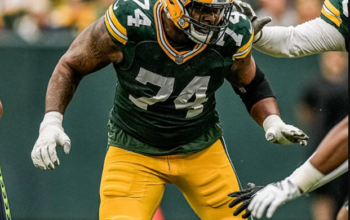The Green Bay Packers, one of the most storied franchises in the NFL, have been navigating a challenging season with several key players suffering injuries. One of the most concerning injuries for the team and its fans involves a knee injury sustained by a prominent player. This blog post will delve into the details of how the injury occurred, its immediate aftermath, and its potential impact on the Packers’ season.
The Incident
The knee injury occurred during a high-stakes game against a division rival. The player in question, a key contributor to the team’s offense/defense, was performing at a high level throughout the season. The play leading to the injury was a routine one—a situation that can underscore just how unpredictable football injuries can be.
During the play, the player was engaged in a tackle/block (depending on the player’s position) when an unfortunate twist of the knee occurred. The mechanism of injury often involves hyperextension, a sudden stop, or an awkward landing, which can lead to severe damage to the ligaments in the knee. In this particular case, as the player attempted to shift direction, another player fell onto their leg, causing the knee to buckle in an unnatural direction. The slow-motion replay revealed the player’s knee bending awkwardly, a sight that left both fans and commentators grimacing.
Immediate Response
As the player went down, it was immediately clear that something was wrong. Teammates quickly signaled for medical assistance, and the team’s medical staff rushed onto the field. The player lay on the turf, clutching their knee—a telltale sign of potential ligament damage. After a brief examination on the field, the player was helped to the sideline, unable to put weight on the injured leg. The expression on the player’s face and the somber mood of the team hinted at the severity of the injury.
Diagnosis and Medical Evaluation
Following the game, the player underwent a series of medical evaluations, including an MRI scan, to determine the extent of the damage. The primary concern in such injuries often revolves around the ligaments, particularly the Anterior Cruciate Ligament (ACL), Medial Collateral Ligament (MCL), and the Meniscus. In this case, the MRI results revealed (specific injury details, e.g., a torn ACL, MCL sprain, or meniscus tear).
The team’s medical staff, along with external orthopedic specialists, evaluated the injury and determined the best course of action. The severity of the injury necessitated a surgical intervention (if applicable), followed by an extensive rehabilitation process. The timeline for recovery can vary significantly depending on the exact nature of the injury and the individual’s response to treatment.
Impact on the Team
The loss of this player is a significant blow to the Packers, given their role and impact on the game. (Discuss the player’s position, statistics, and contributions to the team’s performance.) For example, if the injured player is a wide receiver, they might have been leading the team in receptions and touchdowns, making them a critical component of the offense. Alternatively, if the player is a defensive lineman, their ability to pressure the quarterback and stop the run would be sorely missed.
The coaching staff now faces the challenge of filling the void left by the injured player. This could involve promoting a backup player, altering the game plan, or even seeking external reinforcements through trades or free agency. The injury also places additional pressure on other players to step up and compensate for the loss.
Rehabilitation and Recovery
The road to recovery for knee injuries can be long and arduous. The player will undergo a carefully monitored rehabilitation program, including physical therapy to regain strength, flexibility, and mobility in the knee. The initial focus will be on reducing swelling and pain, followed by exercises designed to restore the full range of motion. Strengthening the muscles around the knee, particularly the quadriceps and hamstrings, will be crucial in supporting the joint and preventing future injuries.
The player will also engage in agility and balance training to regain confidence in the knee’s stability. Depending on the nature and severity of the injury, the rehabilitation process could take anywhere from a few months to over a year. The player’s return to play will be gradual, with a focus on ensuring they are physically and mentally ready to compete at the highest level.
Looking Ahead
While the injury is undoubtedly a setback for both the player and the team, the Packers are no strangers to adversity. The team’s resilience will be tested as they adjust to the loss and strive to continue their pursuit of a successful season. Fans and analysts alike will keep a close eye on the player’s recovery progress and the team’s performance in their absence.
In the meantime, the Packers’ coaching staff and medical team will work tirelessly to support the injured player through their recovery, hoping for a successful return to the field. As the player embarks on this challenging journey, the entire Green Bay community will rally behind them, offering unwavering support and encouragement.
Conclusion
Knee injuries are an unfortunate reality in professional sports, and the Packers’ latest injury serves as a reminder of the physical toll that football can take on its players. While the road to recovery may be long, the player has the full backing of the organization, teammates, and fans. The team’s ability to adapt and overcome this challenge will be crucial in determining their success this season. As the player works towards making a full recovery, the entire Packers nation will be cheering them on, eager to see them back in action.


